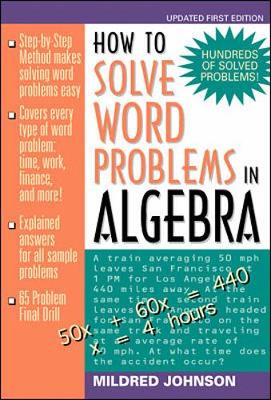

- #Algebraic geometry a problem solving approach plus
- #Algebraic geometry a problem solving approach professional
Over the last decades, an extensive body of research from different settings and contexts have investigated variables that influence students’ attitude towards Science, Technology Engineering and, Mathematics (STEM) (e.g., Aiken, 1970 Gardner, 1975 Kempa and McGough, 1977). Attitude can be categorized as bi-dimensional (person’s emotions and beliefs) or multidimensional (affect, behavior, and cognition). According to Lin and Huang ( 2014), attitude towards mathematics can be referred to as positive, negative, or neutral feelings and dispositions. For instance, Aiken ( 1970) defined attitude as “a learned disposition or tendency on the part of an individual to respond positively or negatively to some object, situation, concept or another person” (p. It has been defined by different authors in different settings and contexts.

The term attitude is not a new concept in mathematics education. Overall, the study findings support the theoretical framework for enhancing the learning of mathematics word problems in general and LP in particular.
#Algebraic geometry a problem solving approach professional
The teachers’ continuous professional development courses should be enacted to improve instruction, assessment, and students’ attitude. Varying classroom instructional practices could be a remedy to enhance students’ understanding, achievement, and, motivation in learning mathematics word problems. The study recommends that teachers should cultivate students’ interests in mathematics as early as possible. The present study provides insight to different educational stakeholders in assessing students’ attitude towards LPMWPs and may provide remediation and interventional strategies aimed at creating students’ conceptual change. This study acknowledges the influence of and supplements other empirical findings on students’ attitude towards learning mathematics word problems. The discrepancy is perhaps explained by both theoretical and/or psychometric limitations, and related factors, for instance, students’ academic background, school characteristics, and transitional beliefs from primary to secondary education. Additionally, the results found no significant statistical relationship between students’ attitudes towards LPMWPs and their age, gender, school location, school status, and school ownership. Enjoyment, motivation, and confidence were weekly negatively correlated while usefulness was positively correlated. The results revealed that students’ attitude towards LPMWPs was generally negative. The attitude towards mathematics inventory-short form (ATMI-SF) was adapted (with α = 0.75) as a multidimensional measurement tool for measuring students’ attitude towards LPMWPs. Cluster random sampling was applied to select respondents from eight schools four from central Uganda and four from eastern Uganda. A sample of 851 grade 11 Ugandan students (359 male and 492 female) from eight secondary schools (public and private) participated. An explanatory sequential quasi-experimental design involving a pre-intervention-intervention-post-intervention non-equivalent control group was adopted. In this article, we present the findings of an investigation on students’ attitude towards linear programming (LP) mathematics word problems (LPMWPs). The last chapter is on sheaves and cohomology, providing a hint of current work in algebraic geometry.Students’ positive attitude towards mathematics leads to better performance and may influence their overall achievement and application of mathematics in real-life. Abstract algebra now plays a critical role, making a first course in abstract algebra necessary from this point on. Chapters 4 and 5 introduce geometric objects of higher dimension than curves. Both chapters are appropriate for people who have taken multivariable calculus and linear algebra. Chapter 2 leads the reader to an understanding of the basics of cubic curves, while Chapter 3 introduces higher degree curves. The first chapter on conics is appropriate for first-year college students (and many high school students).
#Algebraic geometry a problem solving approach plus
This text consists of a series of exercises, plus some background information and explanations, starting with conics and ending with sheaves and cohomology.

It is not an easy field to break into, despite its humble beginnings in the study of circles, ellipses, hyperbolas, and parabolas. Algebraic Geometry has been at the center of much of mathematics for hundreds of years.


 0 kommentar(er)
0 kommentar(er)
